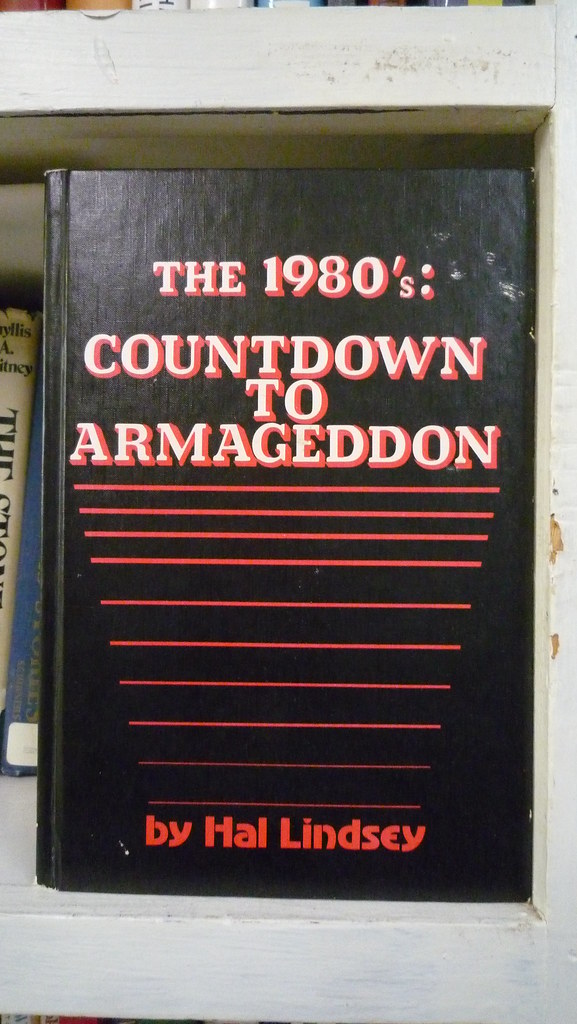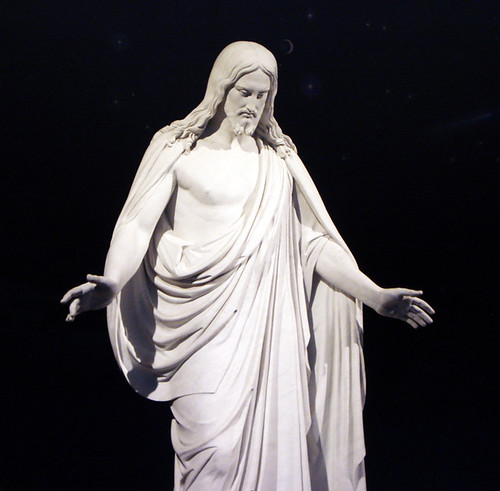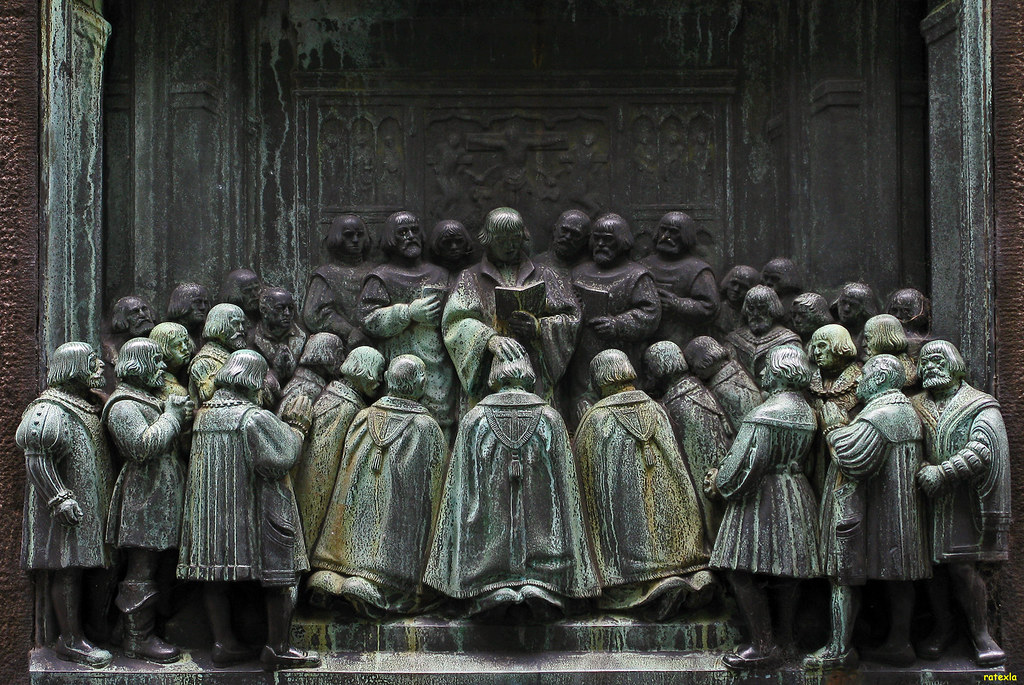
The passing of Hal Lindsey on November 25 at the age of 95 marks the end of an era for many who followed his distinctive interpretations of biblical prophecy. Lindsey, a figure who became a household name in the 1970s, was instrumental in popularizing a complex theological framework that connected ancient scriptures to contemporary and future global events. His work, particularly his monumental book ‘The Late Great Planet Earth,’ resonated with millions, offering a seemingly clear roadmap for understanding the unfolding drama of the world through a prophetic lens.
Lindsey’s approach was not merely academic; it was deeply personal and urgently relevant to a generation grappling with profound societal changes, international conflicts, and the looming threat of nuclear war. He posited that the Bible held not just spiritual guidance but also predictive insights into humanity’s ultimate destiny. This unique blend of theological exposition and timely commentary captured the imagination of a vast readership, extending far beyond traditional evangelical circles and firmly embedding apocalyptic speculation into American popular culture.
This article delves into the remarkable journey of Hal Lindsey, examining the genesis and unprecedented success of his most famous work, the theological underpinnings that shaped his worldview, and the innovative ways he communicated these ideas to a broad audience. We will explore how a tugboat captain turned campus preacher managed to redefine the public’s engagement with prophecy, paving the way for a new wave of apocalyptic literature and thought that continues to influence discourse today.

1. **The Passing of Hal Lindsey: A Noted Prophecy Weaver**
Harold Lee “Hal” Lindsey, a man who profoundly shaped a generation’s understanding of biblical prophecy, passed away on November 25, 2024, at the age of 95. His death marked the culmination of a life dedicated to interpreting scripture through the lens of current events, a practice that earned him widespread recognition and, at times, considerable controversy. He was a central figure in the popularization of end-times theology, an interpretive framework that sought to connect ancient biblical predictions to the headlines of modern life.
Lindsey’s ministry consistently emphasized that all worldly events, from geopolitical shifts to societal anxieties, were part of a divinely ordained timeline leading to the return of Jesus Christ. This perspective offered a sense of order and purpose amidst the perceived chaos of the mid-20th century, providing comfort and a call to spiritual vigilance for his followers. His passing, just days after his 95th birthday, left behind a legacy that continues to provoke thought and discussion about faith, the future, and the interpretation of sacred texts.
He is survived by his wife, JoLyn, and his three daughters from his second marriage, Robin, Heidi, and Jenny, along with grandchildren and great-grandchildren. Lindsey’s obituary, published on his ministry’s website, highlighted his enduring commitment to his unique theological interpretations and his relentless pursuit of demonstrating the Bible’s relevance and urgency for contemporary life. His impact on Christian eschatological thought and popular culture remains a significant chapter in recent religious history.

2. **”The Late Great Planet Earth”: Origins and Unprecedented Success**
Hal Lindsey’s name became synonymous with ‘The Late Great Planet Earth,’ a 1970 book co-written with journalist Carole C. Carlson, that would soon achieve extraordinary commercial success. Initially published by Zondervan, a smaller Christian publisher at the time, the book quickly gained traction within religious circles. Its direct and accessible style, which linked biblical prophecy to the pressing issues of the day, resonated immediately with readers.
The book’s rapid ascent was remarkable, selling 500,000 copies within just a few years of its initial release. This early success caught the attention of Bantam Books, a mainstream publisher, which acquired the mass-market paperback rights. This pivotal decision propelled ‘The Late Great Planet Earth’ into an entirely new realm of distribution, making it available in an unprecedented number of locations across the United States. It was sold at newsstands, bus stations, airports, supermarkets, and alongside other popular paperbacks of the era.
By the end of the 1970s, ‘The Late Great Planet Earth’ had sold more than 10 million copies, a truly staggering figure that cemented its place in literary history. ‘The New York Times’ would later declare it the best-selling nonfiction book of the decade. By 1999, estimates placed its sales at around 35 million copies, translated into approximately 50 languages, showcasing its profound global reach and enduring appeal.

3. **Bringing Obscure Theology to the Mainstream: Dispensationalist Premillennialism Explained**
At the heart of Hal Lindsey’s work was the theological system known as dispensationalist premillennialism, a framework that, prior to his efforts, was largely confined to specialized theological discussions. Lindsey effectively translated this intricate system for a mass audience, demystifying its concepts and making them seem immediately understandable and compelling. His achievement lay in popularizing ideas that had long been considered obscure or technical.
Dispensationalism, as taught by Lindsey, asserts that to properly understand the Bible, one must recognize how God interacts with humanity differently across distinct historical epochs, or “dispensations.” A core tenet of this system, particularly relevant to Lindsey’s predictions, posits that God has two distinct chosen peoples: Israel, destined for earthly plans, and the Church, composed of gentiles, who will reign with God in heaven after the Rapture. This dualistic approach provided a framework for interpreting events concerning both Jewish people and the Christian church.
This interpretive methodology was formalized in the 19th century during various prophecy conferences and further codified in the early 20th century through the fundamentalist movement, notably with the publication of the Scofield Reference Bible in 1909. Lindsey’s academic background at Dallas Theological Seminary, a recognized center of dispensationalist theology, provided him with a rigorous grounding in this particular interpretive approach. He graduated in 1962 with a degree in Greek New Testament, equipping him with the tools to delve deeply into the scriptural foundations of his later teachings.

4. **Biblical Prophecy and Current Events: Lindsey’s Core Interpretive Approach**
Lindsey’s enduring appeal stemmed from his unwavering conviction that applying Scripture to the “signs of the times” was the most effective way to demonstrate the Bible’s profound relevance and urgency in modern life. He firmly believed that the Bible held the answers to all of life’s profound questions, including the most pressing one: “What happens next?” This emphasis on the prophetic future provided a compelling hook for a world facing unprecedented uncertainty.
In the opening of ‘The Late Great Planet Earth,’ co-written with Carole C. Carlson, Lindsey articulated this sentiment clearly: “There are other places men search for answers: philosophy, meditation, changing environment, science. Let’s give God a chance to present His view.” This invitation to consider divine foresight as the ultimate source of understanding distinguished his work and drew in a generation hungry for meaning and direction. He presented biblical prophecy not as abstract theological speculation, but as a living, dynamic commentary on global affairs.
His method gained prominence during his time with Campus Crusade for Christ (now Cru) at UCLA, where he initiated popular Bible studies focused specifically on prophecy. Week after week, Lindsey would connect the contemporary crises facing baby boomers – the Vietnam War, widespread protests and riots, the exploding counterculture, escalating conflict in the Middle East, and the pervasive threat of nuclear war – directly to predictions found within the Bible. He assured students that these turbulent events were not random but were divinely foretold, offering a unique perspective on their tumultuous world.

5. **The ‘Signs of the Times’: Israel’s Rebirth and the Imminence of the End**
Central to Lindsey’s prophetic framework was a specific sequence of four major events he believed had to unfold before the Second Coming of Christ. Three of these revolved around the Jewish people: their return to their ancient land, the recapture of Jerusalem, and the rebuilding of the Temple destroyed by Roman legions in 70 A.D. The fourth, crucial for Christians, was the Rapture, an event he suggested could occur at any moment. These interconnected prophecies formed the backbone of his timeline for the end times.
Lindsey argued that two of these critical steps had already been fulfilled within his lifetime, signaling the imminent arrival of the others. The establishment of the state of Israel in 1948 was seen as the fulfillment of the Jewish people’s return to their land. The victory in the Arab-Israeli War of 1967, which resulted in the Jewish people taking Jerusalem, marked the second fulfilled prophecy. For Lindsey and his followers, these events were not mere historical occurrences but undeniable “signs” that the end was, in fact, “quite near.”
His interpretation of Matthew 24:32-34, where Jesus speaks of the fig tree blossoming as a sign of his coming, further underpinned his predictions. Lindsey suggested that Jesus’ return might occur within “one generation” of the rebirth of the state of Israel in 1948. While he used qualifying phrases like “or so,” he often asserted that “in the Bible” one generation equated to forty years. This led many readers to infer that the Tribulation or the Rapture would likely transpire no later than 1988, creating a profound sense of urgency and expectation.

6. **Connecting with a Generation: Lindsey’s Accessible Style for Baby Boomers**
Hal Lindsey possessed a unique popular touch that significantly differentiated his writing from the more technical and often esoteric works of his dispensationalist teachers at Dallas Theological Seminary. Recognizing the intellectual and spiritual hunger of the baby boomer generation, he deliberately jettisoned traditional theological jargon in favor of an easy, conversational style that resonated deeply with his target audience. This stylistic shift was crucial to his widespread appeal and the success of his publications.
Lindsey skillfully adopted the vernacular and sensibilities of the era, making complex prophetic concepts digestible and even exciting. For instance, he famously referred to the Rapture as “the ultimate trip,” a phrase that connected directly with the countercultural language of the time. Similarly, he dubbed the Antichrist the “Future Fuhrer,” a vivid and somewhat sensationalized description that captured attention and simplified a traditionally ominous figure for a new generation of readers.
He explicitly recognized the particular character of his audience, including himself in the demographic born two to three decades after him. “We have been described as the ‘searching generation,’” he explained. “We need so many answers—answers to the larger problems of the world, answers to the conditions in our nation, and most of all, answers for ourselves.” This empathetic understanding of generational anxieties allowed him to frame prophecy as the ultimate solution to their profound questions, making the Bible seem incredibly relevant and urgent. His accessible language and engaging tone turned prophecy into a subject of mass appeal.

7. **The Multimedia Phenomenon: Film, Television, and Wider Reach**
The phenomenal success of ‘The Late Great Planet Earth’ transcended the printed page, quickly evolving into a major multimedia phenomenon. Its profound impact and compelling narrative made it a natural candidate for adaptation to other popular forms of media, significantly broadening Lindsey’s reach and influence. The book was transformed into a television special in 1974 and 1975, attracting an impressive audience of 17 million viewers, demonstrating its capacity to captivate a mass public.
Further cementing its cultural footprint, the book was adapted into a 1978 film, directed by Rolf Forsberg and Robert Amram, which was released by Pacific International Enterprises. Adding a layer of gravitas and wide appeal, the film was famously narrated by the legendary director Orson Welles. Welles’s authoritative voice provided a compelling backdrop to Lindsey’s interpretations of historical and contemporary events, linking them directly to biblical prophecy and enhancing the film’s dramatic impact.
The film version, while arriving nine years after the book, tapped into a prevailing public interest in apocalyptic themes, following the success of other contemporary works like ‘The Omen.’ While its domestic box office gross of $19.5 million against an estimated budget of $11 million might have been modest compared to top blockbusters, it still represented a significant commercial achievement for a prophecy-oriented documentary. This multimedia expansion allowed Lindsey to accrue a fortune through book sales, media appearances, and various products, solidifying his status as a prominent public intellectual and evangelist.
Read more about: From Pixelated Thrills to Global Phenomenon: The Unstoppable Journey of Sega’s Iconic Speedster, Sonic the Hedgehog

8. **Lindsey’s Financial Success and Public Persona**
Hal Lindsey’s remarkable success transcended mere popularity, translating into significant financial gains and a public persona that combined evangelical zeal with an unexpected flair for the material. His extensive book sales, coupled with numerous media appearances and a growing catalog of multimedia products, allowed him to accrue a considerable fortune. This financial prosperity underscored the broad appeal of his message, which resonated far beyond conventional religious circles.
By 1977, his lifestyle was noted by *Publisher’s Weekly*, which described him as “an Adventist-and-Apocalypse evangelist who sports a Porsche racing jacket and tools around Los Angeles in a Mercedes 450 SI.” This vivid portrayal highlighted a departure from the typical image of a theologian, presenting Lindsey as a dynamic figure at ease within contemporary culture while delivering his urgent prophetic messages. The blend of spiritual authority and modern affluence was a distinctive characteristic of his public image.
His financial stature continued to grow, with the *Los Angeles Times* reporting in 1981 that Lindsey was earning “thousands of dollars a week” from the combined sales of his books, films, and cassette tapes. Beyond his media ventures, Lindsey maintained a demanding schedule of public speaking engagements and acted as a consultant. He famously met with various low- and mid-level government officials across the globe, offering his unique perspective on future events and international affairs, a testament to the perceived credibility and influence of his prophetic interpretations.

9. **Engaging with the Political Sphere: The Reagan Years**
Lindsey’s influence extended beyond the theological and cultural realms into the intricate landscape of American politics, particularly during the late 1970s and 1980s. Convinced of an impending global reckoning, he began to actively advocate for political policies that he believed would prepare the United States for what he termed “what was to come.” This period marked a significant shift in his public engagement, as he directly urged his Christian readership to engage with national policy.
In his 1980 book, *The 1980’s: Countdown to Armageddon*, Lindsey specifically called upon his audience to support a robust United States military buildup, advocating for the expansion of America’s nuclear arsenal, while simultaneously opposing large-scale domestic government intervention. This prescriptive approach resonated with a segment of the electorate, demonstrating how his theological views could be translated into concrete political endorsements, particularly in a period defined by Cold War anxieties.
The book’s reception was notable, selling 360,000 copies in 1980 and securing a spot on *The New York Times* bestseller list for an impressive 20 weeks during that pivotal election year. When Ronald Reagan assumed the presidency, Lindsey’s perceived influence within the evangelical community was such that administration officials reportedly “made sure that Lindsey knew he had their ear.” This connection highlighted a growing synergy between certain segments of evangelical Christianity and the conservative political movement, where Lindsey’s interpretations offered a framework for understanding global threats.
Indeed, religion historian Crawford Gribben later observed that *The Late Great Planet Earth* “exercised enormous influence inside Reagan’s White House,” noting that several cabinet members, including Attorney General Ed Meese and Secretary of Defense Caspar Weinberger, shared the President’s dispensational views. Reagan himself invoked apocalyptic imagery, notably referring to the USSR as an “evil empire” in a 1983 speech to the National Association of Evangelicals, a sentiment deeply aligned with Lindsey’s interpretations of end-times prophecy. Lindsey’s direct engagement with Pentagon staff, military intelligence committees, and the American Air War College further attested to his significant, albeit informal, political impact.

10. **Challenges in Personal Life: Marital Controversies**
Despite his soaring public profile and burgeoning wealth, Hal Lindsey’s personal life encountered significant turbulence, which, for many within the evangelical community, raised serious questions about his character and consistency. His journey into profound faith in the mid-1950s coincided with the dissolution of his first marriage, an event that, while often personal, garnered scrutiny given his public ministry.
Following his conversion and early ministry, Lindsey remarried Jan Houghton, who was actively involved in his work at Campus Crusade. She was even featured alongside him in author photographs and credited in dedications for an extended period, reflecting a partnership that extended into his burgeoning publishing career. However, this union, too, eventually faltered.
By the mid-1980s, an updated edition of *The Late Great Planet Earth* notably removed Jan Houghton’s name from the dedication and featured a new author photograph, signaling a significant personal shift. Lindsey’s subsequent second divorce—and his eventual third and fourth marriages—became a source of contention and disappointment for a considerable number of his evangelical supporters. These successive marital changes stood in contrast to widely held conservative Christian values regarding marriage, prompting evangelicals to question the private conduct of a figure who publicly preached on God’s divine plan.
Read more about: Unmasking the Myths: Why Society Keeps Getting Duped About What it Means to Be a Woman

11. **The Weight of Unfulfilled Prophecies: The 1988 Expectation**
Perhaps the most significant challenge to Hal Lindsey’s credibility and public reputation arose from the failure of his prominent predictions regarding the timing of the end times. In his influential early works, Lindsey had suggested that the fulfillment of all biblical prophecies would “likely be fulfilled within forty years or so of 1948,” the year of Israel’s re-establishment as a nation. This projection, rooted in his typological interpretation of Matthew 24 and the “one generation” principle, created a profound sense of temporal urgency among his readership.
Although he meticulously included qualifying phrases such as “or so,” providing himself with a theoretical escape clause, the prevailing impression among his vast audience was that the return of Christ, the Rapture, or the onset of the Tribulation would occur no later than 1988. This specific timeframe became deeply ingrained in the expectations of millions of his followers, creating a tangible deadline for prophetic fulfillment. The anticipation was palpable, and the passing of the year 1988 without these cataclysmic events was a profound moment of reckoning.
When 1988 arrived and then receded without the prophesied events materializing, Lindsey faced widespread criticism and was compelled to defend his end-times speculations. The collapse of the Soviet Union, a primary subject of many dispensational analyses and a key player in his predicted global conflicts, further complicated his interpretations. Confronted with these discrepancies, Lindsey reflected on the high stakes of his public pronouncements.
In an interview with *Christianity Today* around the publication of *The Terminal Generation*, when asked about the risks of failed predictions, Lindsey candidly stated, “There’s just a split second’s difference between a hero and a bum.” He acknowledged the heroic status he had achieved within the Christian community, but also the precipitous fall that awaited him if his predictions proved incorrect, highlighting the immense pressure inherent in his role as a modern-day prophet.

12. **Adapting to New Geopolitical Realities: Post-Cold War Interpretations**
The geopolitical landscape of the late 20th century underwent a dramatic transformation with the dissolution of the Soviet Union, presenting a significant interpretive challenge to Hal Lindsey’s prophetic framework, which had heavily relied on a Cold War narrative. Many of his early predictions, particularly those concerning global conflicts, had featured the USSR as a central antagonist. The collapse of this superpower necessitated a substantial re-evaluation of his eschatological models.
Despite the marginalization he experienced from some evangelical circles due to his failed predictions, Lindsey demonstrated a remarkable ability to adapt and maintain his commercial viability. He swiftly retooled his analyses for the emerging post-Cold War world, proving that his appetite for connecting current events to biblical prophecy remained undiminished. This adaptability allowed him to re-engage with his audience, offering fresh perspectives on a rapidly changing global order.
His efforts to update his prophetic interpretations found renewed success with the publication of *Planet Earth Two Thousand AD: Will Mankind Survive?* in 1994. This book, designed to address new geopolitical realities, once again propelled him onto bestseller lists, affirming the enduring public interest in his unique brand of apocalyptic speculation. Lindsey’s ability to pivot his focus, incorporating new global challenges and threats into his prophetic worldview, allowed him to retain a significant following even after the perceived setbacks of 1988.

13. **Sustained Media Presence and Later-Career Commentary**
Even as his earlier predictions faced scrutiny and the geopolitical map shifted, Hal Lindsey’s commitment to disseminating his prophetic interpretations remained steadfast, primarily through a consistent and evolving media presence. In 1994, he launched the prophecy-oriented television news show *International Intelligence Briefing*, providing a regular platform for his analysis of world events through an eschatological lens. This program eventually found a long-term home on the Trinity Broadcasting Network, a major force in Christian media.
The show, later rebranded as *The Hal Lindsey Report* in 2007, allowed Lindsey to continue his mission of connecting current events to biblical prophecy well into the 21st century. He appeared to relish the process of reevaluating and refining his interpretations in light of new global developments. Significant historical moments, such as the fall of the Soviet Union, the terrorist attacks of September 11, 2001, and the subsequent war on terror, all served as fresh grist for his prophetic mill, prompting him to offer updated commentaries on their biblical significance.
In the final months before his death, Lindsey remained actively engaged, providing commentary on pressing contemporary issues. He publicly addressed the 2024 election and the ongoing conflict between Israel and Hamas, continuing to interpret these events as fulfilling ancient prophecies. His enduring message, delivered with characteristic conviction, was always one of hope and spiritual vigilance: “Remember that all this was foretold by the prophets, and it leads to something wonderful—the return of Jesus.” He encouraged his followers to “stay faithful. Continue to pray for the peace of Jerusalem. Draw especially close to the Lord and His Word in this hour. Spread the good news of God’s amazing salvation,” thus concluding his long career with a consistent call to faith amidst perceived end-times.

14. **Enduring Cultural and Religious Legacy**
Hal Lindsey’s profound impact on American culture and religious thought extends far beyond the immediate success of his books and media appearances, shaping the broader landscape of evangelical apocalypticism and influencing popular culture in unexpected ways. His achievement lay in bringing the “once-obscure theology of dispensationalist premillennialism into the mainstream,” familiarizing wide audiences with concepts like the Rapture, the Antichrist, and the mark of the beast, which subsequently became embedded in popular lexicon.
The flexibility and adaptability of Lindsey’s core ideas are perhaps the clearest indicators of his lasting legacy. These concepts have been appropriated and reinterpreted in various contexts, from serious theological discussions to satirical critiques. For example, critics of COVID-19 vaccines controversially invoked the “mark of the beast” in their arguments, demonstrating how Lindsey’s popularized terminology continued to resonate in contemporary public discourse. Even in secular entertainment, his influence is evident, with Jewish comedians Seth Rogen and Evan Goldberg notably producing a film centered on the concept of the Rapture, showcasing its pervasive cultural presence.
Furthermore, Lindsey’s ministry had a discernible, albeit indirect, effect on popular music. During the 1970s, he was associated with the Vineyard Fellowship and Calvary Chapel, both influential in the Southern California Christian music scene. Legendary recording artist Bob Dylan, who underwent a Christian-and-Gospel phase from 1979 to 1981, was also active in the Vineyard Fellowship at the time. According to Jeffrey Lamp, a Professor of New Testament Theology, Lindsey’s focus on prophecies concerning the Jewish people and the state of Israel provided a unique framework that allowed Dylan to integrate his Jewish background with his newfound Christian faith, influencing the lyrical themes of his gospel albums.
Lindsey’s ability to “redefine the public’s engagement with prophecy” paved the way for a new wave of apocalyptic literature, most notably the *Left Behind* series by Tim LaHaye and Jerry B. Jenkins, which further cemented end-times narratives in the American consciousness. While his specific predictions may not have materialized as anticipated, his method of making complex eschatological ideas accessible and urgent left an indelible mark, ensuring that the conversation around biblical prophecy and its modern relevance continues to unfold, debated and discussed, long after his passing.
Read more about: Exploring the Minds that Shaped Our World: A Journey Through the Legacies of Iconic Scientists
As the final chapter closes on Hal Lindsey’s remarkable life, his legacy endures as a complex tapestry woven from fervent faith, unparalleled popularization of prophecy, and the intricate dance between spiritual conviction and shifting global realities. He was a figure who not only interpreted the future but, through his profound influence on millions, arguably shaped the very cultural and political landscape he so meticulously analyzed. His work stands as a testament to the enduring human fascination with destiny, the divine, and the persistent quest for meaning in an ever-changing world.



